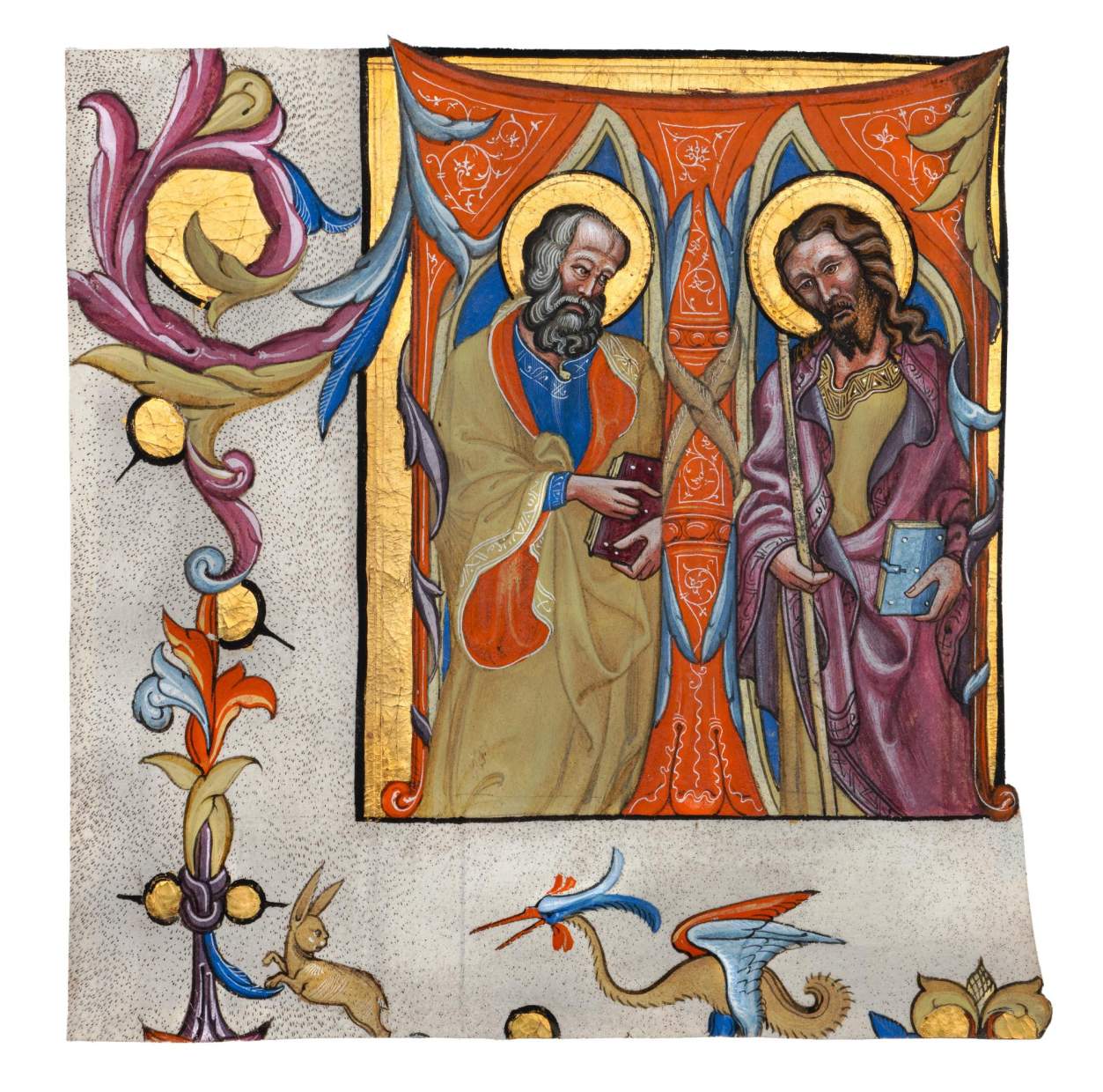

Saints Philip and James in a historiated initial T, cutting from an Antiphonary leaf. Italy, Lucca, c. 1410-20
Cutting, c.185 x 185 mm. Tempera and ink on vellum. Musical notation in brown ink on four lines stave. – Minor loss of pigment, else in very good condition.
Hide caption
This vibrant initial T introduces the antiphon for Lauds during the feast of Philip and James on May 1st, using the Latin invocation Tanto tempore vobis cum sum. The arms of the initial T embrace the two saints, almost like wings – an impression that is underlined by the curling feather-like acanthus leaves decorating the sides of the letter. This initial, possibly from the cathedral of San Martino in Lucca, exemplifies how illuminated manuscripts unite the sacred and artistic on their pages. The vibrant colour palette, using a bright coral, soft mauve, and royal blue is very attractive. While the two Saints exude gravitas and are depicted in rigid, symmetrical poses, in the margins a hare with a curmudgeonly expression is chased by a bird-like hybrid creature.
The style of the miniature is characteristic of the works Niccolò di Giacomo and Martino di Bartolomeo, confirming that our illuminator was active in Lucca. Niccolò was the first artist, who illuminated a choir book for the Carthusians in Lucca in the late 14th century, commissioned by the Bishop of Lucchese Niccolò di Lazzaro Giunigi. Martino was responsible for an impressive series of choir books for Lucca Cathedral, commissioned by the same patron, ca. 1394-1400.
Intriguingly, the style of this illumination reflects a later stage in Lucchese illumination, from the area of Lucca and Pisa around 1405. The art in this region was influenced by painters who had emigrated or returned from Iberia, such as the Portuguese Alvaro Pirez and Gherardo Starnina, but also by local painters such as the Master of Barga.
With its eye-catching palette, and faces and fabrics with an almost wood-carving-like quality, the initial T is a wonderful witness to Lucchese book art in the late 14th century.
This leaf is a sister leaf to our miniature depicting Saints Peter and Paul. Read more about the miniature here.



